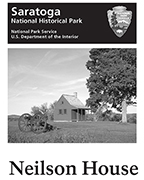
What was the turning point of the American Revolution? The standard answer is the Battle of Saratoga in October, 1777. The British under General Johnny Burgoyne sought to divide and conquer the fledgling United States. Through a three-pronged attack, the British, who already occupied New York City, would separate New England from Pennsylvania and Virginia thereby bringing the would-be country to its knees. As many Americans know, the plan was unsuccessful and it was at Saratoga where the floundering effort finally failed. The British surrender there caught the attention of the French who then allied with the United States. The rest, as they say, is history.
During the Teacherhostels/Historyhostels I led, we visited many sites in New York associated with the American Revolution including Saratoga. During one program, I detected a pattern among the various sites: they all claimed to be the turning point of the American Revolution! Once I caught on to this pattern, I shared my observation with the teachers. You can guess what happened next. At our next stop, after about five minutes into the talk, the docent of the site exclaimed that the site was the turning point of the American Revolution. The teachers then began to laugh. I felt sorry for the docent who was not privy to the information I had just mentioned to the teachers before we walked into the museum.
Obviously, all these locations cannot be the turning point of the American Revolution. No doubt American Revolution scholars/professors could easily demolish the arguments made to support these claims. Equally obviously, such a decimation would entirely miss the point. The observable phenomena is that the American Revolution is the foundational event for the creation of this country and everyone wanted to connect their community to that event. By claiming to be the turning point, these people assert that the American Revolution is their story regardless of whether or not they were a biological son or daughter of the American Revolution. Through the claim of being the turning point, these people were proudly declaring and affirming their identity as Americans.
Lately this desire to connect to the American Revolution has expanded beyond a geographical link. Now the link is being claimed based on race, gender, class, and ethnicity. It as if everyone wants to get into the act. The story of the American Revolution isn’t just purview of heroic dead white men. On the contrary, the true story includes a demographically diverse range of a portion of colonists united in their commitment and willingness to sacrifice their lives on behalf of the new born country. They didn’t want the United States to be still-born or die in infancy but to grow and thrive. Just as all these geographical communities link themselves to the story of the American Revolution born on the fourth of July, so increasing number of demographic communities have sought in recent years to make the American Revolution part of their heritage as well.
The most striking current example of connecting a demographically-diverse constituency to the American Revolution is, of course, Hamilton, the musical. When I attended the American Revolution Reborn conference in Philadelphia in 2013 (the subject of five posts), it is reasonable to conclude that no one present anticipated that the American Revolution would be reborn as a musical and one dedicated to Hamilton, of all people. The recent exhibition about him at the New-York Historical Society did not engender such warm and lavish praise on him as a representative of the demographically-changing American population. Quite the contrary. Back then it was more of: here’s another boring exhibition by a staid elitist organization about a dead white man. Who knew? Now it hosted the summer of Hamilton!

Meryl Streep and the American Revolution (Hollywood Reporter)
As it turns out, our connecting all Americans to the American Revolution is essential if We the People are to continue to exist. Our connecting to the American Revolution is essential to the health and strength of the social fabric of this country. If it unravels or is torn asunder, then the United States ceases to exist. Luminaries like Frederick Douglas, Abraham Lincoln, and Martin Luther King all connected with the Declaration of Independence in some way as did the Seneca Falls Convention and George M. Cohan. Lin-Manuel Miranda is part of a long and hallowed tradition of breathing life into America’s heritage to renew it. Meryl Streep’s shout out to Deborah Sampson at the Democratic National Convention is the most recent highly visible example of linking oneself to that foundational event.
I was reminded of the importance of being the turning point of the American of the great defeat in the American Revolution 240 years ago today. It is called the Battle of Brooklyn or of Long Island or of New York. It has multiple names with Brooklyn now asserting itself and its connection to the American Revolution. (There is no shame anymore in having a 718 area code rather than 212!) Regardless of the name, the battle marked a major defeat for the country that had just declared its independence the previous month. Suddenly out of nowhere a British fleet with over 30,000 people, a veritable city of its own, appeared on the horizon. As the New Yorkers gazed out to the ocean on August 22, all they could see was this massive flotilla. There were no satellites then to track the movement westward of the level 5 Howe Hurricane from England. It is difficult today to convey the impact the British fleet had then. Perhaps the closest example of this shock-and-awe armada is the fictional appearance of the spaceships in the movie Independence Day before it obliterates the White House [the movie combines American Revolution and War of 1812 resonances].
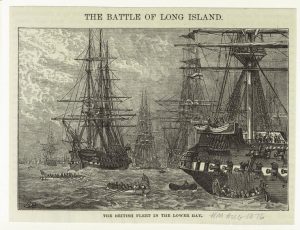
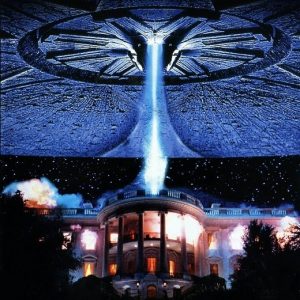
The British fleet in the lower bay (Harpers Magazine, 1876) and Independence Day
The battle on August 27 is not as well-known as some others, after all we lost. Barnet Schecter tirelessly tells the story of the battle for New York in person and in a book of the same title. John Glover fans strive to sustain the memory of the heroic Massachusetts fisherman/merchant who led the evacuation of the Continental army from Long Island to Manhattan under a providential fog during the night of August 29-30. This escape was made possible in part due to the valiant efforts of the First Maryland Regiment to delay the British to provide Washington the time needed to cross over. Hundreds of Marylanders sacrificed themselves in what was in effect a suicidal but critical mission. Brooklynite Bob Furman has led the effort to identify and commemorate the sites in Gowanus where the Maryland 400 fought and where the British dumped the bodies afterwards (as Lance Ashworth struggles to do at the Fishkill Depot at the cemetery there). The book about the Regiment is titled Washington’s Immortals: The Untold Story of an Elite Regiment Who Changed the Course of the Revolution by Patrick O’Donnell by perhaps no coincidence whatsoever attests the “turning point” ethos.
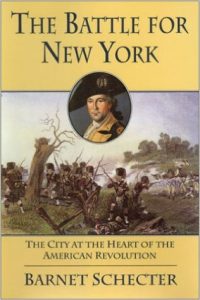
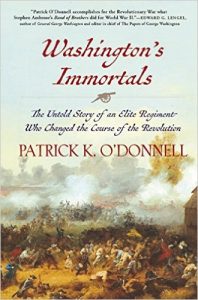
There even will be “The Battle of Brooklyn” exhibit opening at the New-York Historical Society shortly. Imagine that! According to Valerie Paley, vice president and chief historian, the Battle of Brooklyn was not the turning point of the American Revolution. I repeat: she did not say it was the turning point. She did however say it may have been the most important battle of the American Revolution. She really is saying the battle was the turning point because of what the British didn’t do. They failed to capture George Washington, the indispensable person. If you think the United States is the Great Satan and can go back in time, then you go back and kill him because without him, there would be no America. And if you can’t kill him physically then kill him through your scholarship. The British failed to apprehend him and eventually paid the price when Washington returned to New York to be inaugurated there as President of the United States.


Valerie Paley, New-York Historical Society, Bob Furman (NYT August 26, 2012)
So even though the Battle of New York/Long Island/Brooklyn was lost and New York was occupied territory until Evacuation Day, November 25, 1783, the battle set the stage for what was to come. The failure to capture Washington and his army led to Plan B: shock-and-awe was replaced with divide-and-conquer. Plan B ended in failure at Saratoga.
There is a new exhibit called “Witness to War” at the Old Stone House in Brooklyn where these events transpired. According to the website: “Ten themed areas allow visitors to explore this history and consider how war impacted the community, what choices citizens had to make at the time, battle strategies, and what makes these issues relevant in today’s world” thereby connecting people of America’s present to the people of America’s birth.
Witness to War: Appropriating Revolution brings together contemporary artists inspired by the unique history of the House and of other past revolutions in their efforts to address the most important issues of today. In a contemporary political climate where the term “revolution” (defined as “the overthrow of a government or social order in favor of a new system”) risks association with either polarizing rhetoric or cynical complacency, is there an especially appropriate role for artists to play by bringing the tactics and triumphs of the past to the forefront of our conversations.

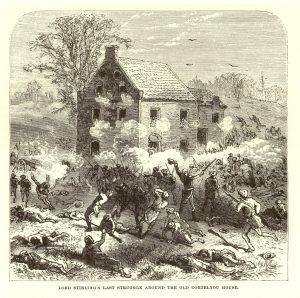
Kim Maier, Executive Director, Old Stone House NYT Auguest 26, 2012
Kim Maier, executive director of the Old Stone House said: “It’s a story about loss, but it’s also a story about how we get to where we are today.” Now more than ever, it is important for We the People in words, music, paintings, art, processions, and re-enactments to tell the story of the American Revolution. The experiment continues, the journey goes on, for in every generation, in every place, in every person, we must be the turning point if the vision is to be realized and the dream fulfilled.





